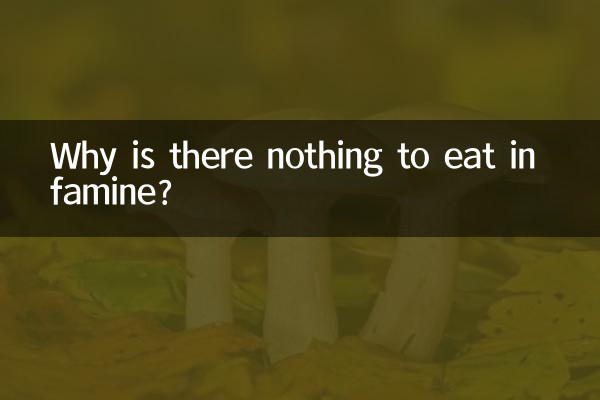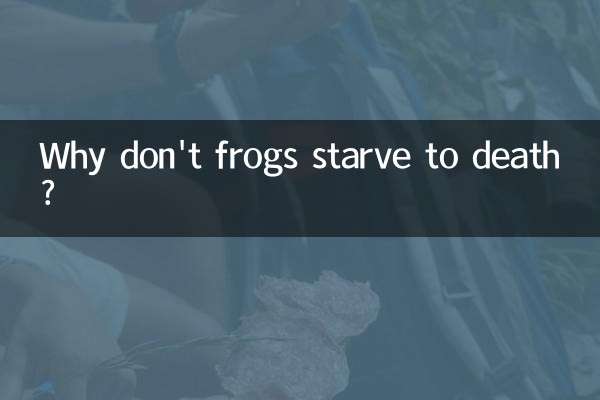Why is there nothing to eat in famine?
In recent years, frequent famines around the world have attracted widespread attention. Why do some people still face food shortages today in a world where technology is highly developed? This article will combine the hot topics and hot content on the Internet in the past 10 days, analyze the causes of famine from multiple angles, and present relevant facts through structured data.
1. Climatic anomalies and natural disasters

Climate change is one of the important factors leading to famine. Extreme weather events such as droughts, floods and hurricanes occur frequently, seriously affecting crop growth and harvests. The following are climate anomalies in some parts of the world in the past 10 days:
| area | climate events | Influence |
|---|---|---|
| east africa | persistent drought | Crop production reduced by more than 50% |
| South Asia | flooding | Rice planting area reduced by 30% |
| South America | hurricane strikes | Banana exports drop 40% |
2. War and Conflict
War and conflict are another major cause of food shortages. The war not only destroyed farmland and infrastructure, but also disrupted the food supply chain. Here are the areas affected by recent conflicts and their food crises:
| area | Conflict type | food shortage |
|---|---|---|
| A country in the Middle East | civil war | 60% of the population faces hunger |
| a region in africa | clash of clans | Food prices rise 300% |
3. Economic factors and inequality
Global economic inequality is also a significant driver of famine. People in poor areas often don't have access to enough food, while rich countries suffer from high levels of food waste. Here are recent relevant data:
| Country/Region | Food waste per capita (kg/year) | Proportion of hungry people |
|---|---|---|
| Developed country A | 120 | 2% |
| Developing Country B | 15 | 25% |
4. Supply chain disruption
Disruptions in global supply chains are also contributing to food shortages. Pandemics, wars and trade barriers can all prevent food from getting to where it is needed in a timely manner. Here are the main food products that have been affected by supply chains in the near future:
| Food types | Causes of supply chain disruptions | price increase |
|---|---|---|
| wheat | Export restrictions due to war | 80% |
| edible oil | shortage of raw materials | 50% |
5. Summary and Outlook
The problem of famine is a complex global challenge involving climate, politics, economy and other factors. To solve this problem, the international community needs to work together:
1. Strengthen climate change response measures to reduce the impact of extreme weather on agriculture
2. Resolve conflicts through diplomatic means and ensure the safety of food production and transportation
3. Reduce food waste and establish a more equitable global food distribution mechanism
4. Invest in agricultural technology to increase food production and disaster resilience
Only through a multi-pronged approach can we truly solve the major problem facing mankind, "Why is there nothing to eat in famine?" so that everyone can get enough food.

check the details

check the details